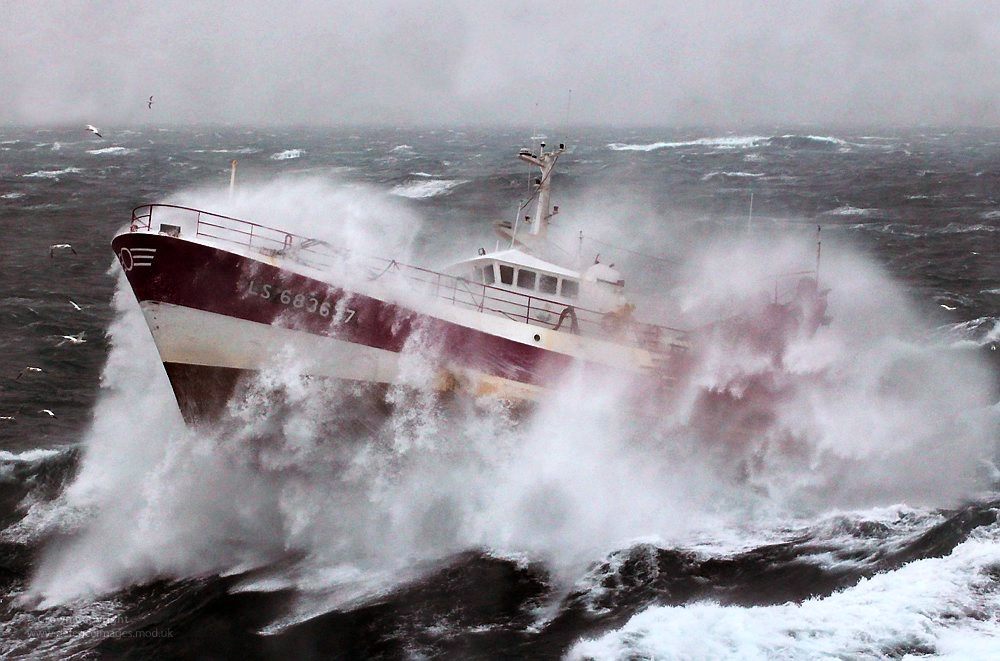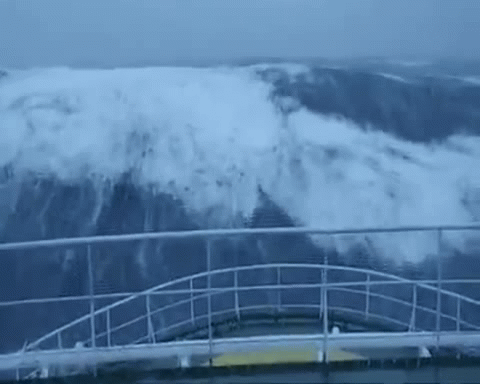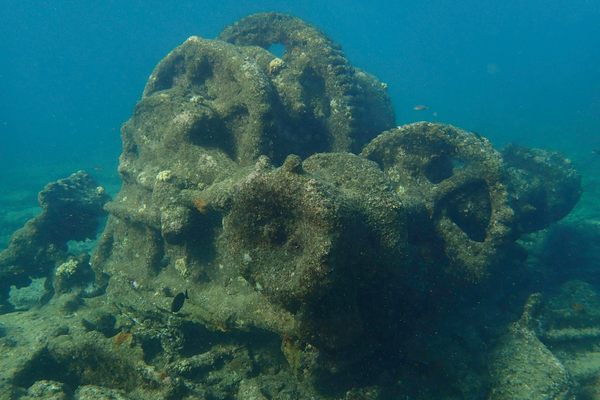These Mesmerizing Videos of Ships Going Through Storms Will Turn You Into a Landlubber for Life

A fishing vessels does battle with the Atlantic off the coast of Ireland. (Photo: UK Ministry of Defense/Flickr)
“How do men act on a sinking ship? Do they hold each other? Do they pass around the whisky? Do they cry?”
In an effort to answer this question, author Sebastian Junger investigated the disappearance of Capt. Billy Tyne and his crew of fisherman aboard the Andrea Gail. When talking to other mariners who survived that infamous storm off the coast of Massachusetts in 1991, Junger realized the true horrors of the ocean.
“A 70 foot wave has an angled face of well over 100 feet. The sea-state had reached levels that no one on the boat, and few people one earth, have ever seen,” Junger’s wrote in The Perfect Storm. When one storm-battered ship ”finally limped into port several days later, one of the officers stepped off and swore he would never set foot on another ship again.”

Now it’s September, and hurricane season is once again upon us. Since it is an El Niño year with cooler than normal temperatures across the tropical Atlantic, everyone is hoping for a low-drama season.
However, as AccuWeather reports, we may not end up being so lucky. Indeed, it is likely that a few tropical storms will track northerly, and make life a living hell for pleasure boaters and working crews alike.
While you may never set sail on the seven seas, why not watch some terrifying, yet mesmerizing videos of ships stuck in storms from the safety of your computer screen?
1.
In this harrowing footage, the British Royal Navy icebreaker HMS Endurance slowly makes it way through the roiling Southern Ocean on the way to Antarctica for scientific research. It’s no surprise that in 2008, in similar conditions, the Endurance suffered crippling damage and was scrapped.
2.
M/S SC Nordic careens unsteadily out of the Vanylvsgapet harbor in Norway. Filmed from a passenger ship heading the other direction, the SC Nordic is passing through the famously tempestuous waters of the Stad peninsula which divides the Norwegian sea from the North sea.
3.
A North Sea ERRV, or Emergency Rescue Ship, braves a storm on its way to deliver much needed supplies to an oil rig in the North Atlantic. This particular ship is captained by Youtuber Bigwavemaster1, who has a minor following for condensing his month-long voyages at sea into 30 second clips.
4.
Here’s the MV RTS Pioneer enduring extremely rough waters off the coast of the Philippines in the Pacific. For perspective, this ship weighs up to 70,000 tons when fully loaded.
5.
This video comes from a Japanese Coast Guard vessel. Tsunamis, though huge, are much more gentle when encountered at sea. If there’s prior warning, many ships prefer to ride out a tsunami at sea. It’s when the waves hit shore that they get violent.
6.
The Volvo Ocean Race is arguably the toughest offshore sailing race in the world. Completing a global circumnavigation in 20 days or less, the sailors race day and night in harrowing conditions. “Boat-breaking” conditions are said to occur when the wind exceeds 50 miles per hour.
7.
Rogue waves are technically defined as spontaneous waves whose peak is more than twice the height of the “significant wave height” of the current sea conditions. What this really means is that rogue waves are monstrous and unexpected. And they can be dangerous. In this video, a cruise ship gets smashed–and the passengers are none too happy.
8.
The Royal National Lifeboat Institution (RNLI) is a British charity that, “saves lives at sea.” It functions similarly to the American Coast Guard, though it is an all-volunteer organization for the express purpose of saving lives, rather than enforcing the law. The RNLI lifeboats and crews are famous for their seaworthiness. In this video, a lifeboat delivers much needed supplies to the remote, weather-bound Scottish island Arran.
9.
One of the most consistently rough parts of the ocean is the Northern Atlantic, particularly the stretch between England and Iceland. In this video, a cargo ship deals with wave heights of up to 70 feet from the ocean’s surface.















Follow us on Twitter to get the latest on the world's hidden wonders.
Like us on Facebook to get the latest on the world's hidden wonders.
Follow us on Twitter Like us on Facebook